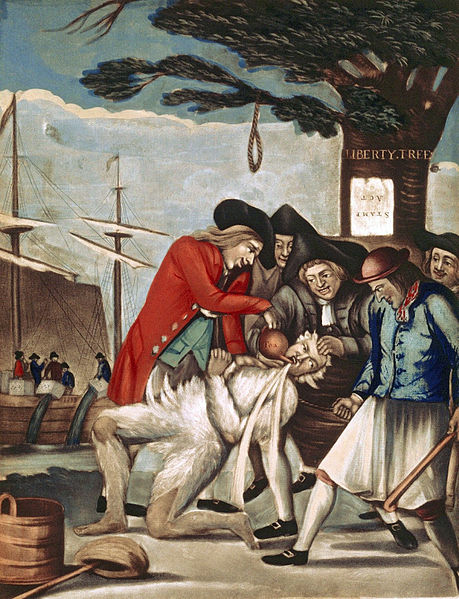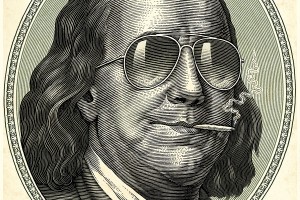Throwback Thursday: The Protest that Spurred a Revolution
If July 4, 1776 marks America’s declaration of independence from Britain, then August 14, 1765 should mark a kind of declaration of defiance. It was on that day that colonists in Boston staged the first act of real resistance against British taxation under an elm tree at the corner of what is now Washington and Essex Streets that became known thereafter as the “Liberty Tree.”
The colonists were protesting the Stamp Act, which required that a variety of paper items, from newspapers to playing cards, carry a special stamp, the cost of which would go toward administering the colonies. The law was the subject of disgust in America, sparking a protest of British taxes that would blossom into a Revolution. At dawn on August 14, two effigies were found hanging from the Liberty Tree, one representing Andrew Oliver, Boston’s Stamp Act Commissioner, and another representing the Earl of Bute, the English lawmaker who orchestrated the Stamp Act. After a day of demonstrations, the protesters marched to Oliver’s home, burned the effigies, and ransacked the house. The Liberty Tree remained a gathering place and a symbol of resistance (as well as the site of a tar and feathering, as was colorfully depicted in the print above.)
Boston is dotted with important sites from that period of history, but trees are a tricky thing to preserve. The Liberty Tree, in particular, never stood a chance. British soldiers cut the Elm down in 1775 during their occupation of Boston. A plaque was eventually installed to mark the spot where the tree had stood, but it became the subject of controversy in the 1960s when the Boston Herald pointed out how little it did to serve as a proper memorial for the gathering place that had spurred the first stirrings of American independence. Reporter Ronald Kessler recently remembered the campaign that began when he first went to inspect the plaque:
A block east of Boston Common, the plaque was in a section known as the Combat Zone, where prostitutes, muggers, and drunks prowled at night. The bas relief was installed on the third-floor level of a former brick warehouse built in 1850 by David Sears.
…
Now black from soot, the building housed a delicatessen, a billiard parlor, a liquor store, and a hamburger place. The plaque was overshadowed by a billboard adjacent to it depicting a chubby young boy eating a hamburger.Nobody looked up to see the plaque, which was just as well: It was covered with bird droppings.
Though the governor initially considered building a park with a new tree, the state instead installed a new plaque, embedded in the sidewalk across from the old one. It wasn’t a full-blown elm tree, and it is still in the line of fire for bird droppings, so it didn’t exactly solve the problem. But the neighborhood around it has certainly cleaned up in the decades since. Short of digging up the walk and planting an elm, maybe the best we can do for the liberty tree on August 14 is to note its meaning in American history when we pass by the spot where it once stood.



